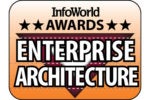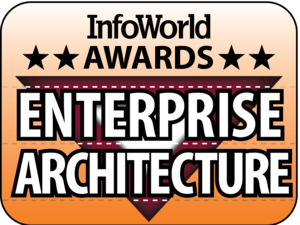Dell: Shifting from hardware to solutions
Over the past several years, Dell has undergone a transformation from transaction-based PC vendor to end-to-end solution provider. Customers asked Dell to become much more than a vendor. The company responded with a commitment to deliver innovative new solutions to customers in four key areas:
- The adoption of virtualization, convergence, and cloud technologies
- Access to powerful, integrated applications
- The ability to turn masses of data into insights
- Overcoming evolving security threats and ensuring regulatory compliance
To meet this challenge, Dell formed the Business Architecture Team (BAT), which includes senior business unit and functional leaders, and reports directly to members of the founder’s leadership team. BAT is responsible for understanding the strategy, transformation planning, and strategic realization of the entire Dell business. The EA group partners closely with BAT to recommend architecture strategy and create solutions across the company. EA is represented at the executive table with other cross-functional business teams, giving it a strong voice in strategic decisions.
Most difficult was the scope of change. Nothing in the Dell value chain was left untouched. Under the new model, Dell may combine software with servers, cloud services, and professional services for installation. Consequently, almost every aspect of Dell's key IT systems needed to change to support the new business strategy.
Faced with this new direction, the EA group adopted a phased approach to strategic planning:
Strategy rationalization: The EA group reviewed Dell's nine functional and four business-unit strategic plans to identify where IT could provide enablement. In addition, the group was charged with identifying strategic contradictions and overlaps, such as two business units proposing different solutions to the same problem.
Enablers and prioritization: Enablers are defined as independently valuable changes to business capabilities. EA and BAT identified the key enablers for each strategy. For example, "solution validation" is an enabler for Dell's strategy to build out its solutions portfolio.
Enabler rationalization: EA identified where multiple strategies required the same enabler. Ultimately, EA created a one-page visualization that presented the rationalized enablers in an easy-to-understand format. The visualization resembles a subway map, where the subway stations are the enablers and the strategies are subway lines -- which often share subway stations.
Architecture and road map planning: Lead architects created an architecture strategy document for each strategy. These describe the architecture transition states for each enabler -- such as the annual changes to the business, application, information, and infrastructure architecture. This approach resulted in a set of funded programs, which amounted to the discretionary portion of Dell's annual IT budget of approximately $1 billion.
Dell's reuse-oriented strategy has several benefits. First, it results in a simpler enterprise architecture and lower implementation cost; IT savings alone are conservatively estimated at $152 million. Second, Dell is optimizing for global, end-to-end solutions rather than disconnected or siloed solutions.
Above all, the EA group has brought architectural clarity, earning the respect and confidence of other internal Dell stakeholders in the planning process. By following through on outcomes, EA provides a clear implementation plan to close all gaps associated with each enabler.
For example, one of Dell's key enablers is to offer customers a simple, consistent quoting and purchasing experience for complex solutions. Last year, the quoting process for complex solution orders involved creating up to three separate quotes and interacting with up to nine separate systems. The process took as many as 100 clicks and more than nine minutes. By the middle of 2014, the same process required one quote and one system, and it took roughly 3.5 minutes. This is the kind of process efficiency required for Dell to make the transition to an end-to-end solution provider.
Going forward, the EA practice will focus on quantifying benefits, with an emphasis on the impact enablers will have on revenue growth. In addition, the decision-making capability of the EA framework will be enhanced, through modeling customer needs and prioritizing strategically important enablers.









